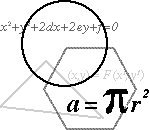THE EQUATION
How do I know how much to use?
Have to run labs for (Volatile compounds) pollutants. Then determine what compounds are present above acceptable limits. When you take these values and then calculate how much soil and or water you are going to biodegrade – all of these values together tell us how much H-10 and L-10 you are going to need. Soil type and consistency help us determine what method to use in order to best install our treatments. The equation looks like this:
(Type of contamination + Level of contamination + Type of soil + Amount of soil or water) = Amount of H-10 or L-10 + Non-chlorinated water needed for mix + Product installation method.
You need to run your metals and Ph only 1 time in the beginning to make sure that the metal levels are not too high (typically any one metal should not be over 100ppm) so that they will not poison and kill the bacteria. Also, good soil conditions should have a Ph range of 5-9.
PROPAGATION
How do I get it ready to be installed???
Propagation occurs in an above ground tank at the site. The H-10™ formula, the cultures, the microaerophillic bacteria and micronutrients are mixed with non-chlorinated water. The water will be the vehicle used in order to deliver the bacteria to the contaminated area when propagation is completed. The cultures consume all the nutrients(nitrogen: phosphorus: potassium) in order to establish bacteria cultures. At the conclusion of the propagation period all the nutrients have been consumed and only natural occurring bacteria cultures are left. The solution now meets the classification standards and criteria for Class D drinking water. Upon conclusion of toxicology testing the bacteria have been classified as non-pathogens and are typically of other soil microorganisms and pose no threat greater than that of typical topsoil when exposed to any dermal cuts or abrasions. It has been established that the bacteria are non-harmful to other, animals and plants.
BACTERIAL COLONIES
During propagation (that occurs in a vat above ground) all chemicals and enzymes used for nutrients to establish bacteria colonies are consumed by the bacteria. No foreign chemicals or enzymes are introduced to the environment! Only class ‘D’ drinking water and 100% natural occurring bacteria are introduced to the environment at the time of placement. Placements are made by one or a combination of the following:
Borings
Slotted PVC wells
PVC remediation irrigation systems
Trenches
Or other methods may be required by site specifications.
The H-10™ and L-10™ technology can be adapted to other technologies that may be currently employed.
(ex: Pump and treat, Vapor extraction, etc.)
If needed or required, Hydraulic controls can be added.
The cultures that have now been established are placed into the environment using various methods of delivery such as monitoring wells, trenches, ponds, etc. The use of bacteria and its application method may also be employed with, or used in combination with, other bioremediation mechanical technologies if applicable or desired. The bacteria consume hydrocarbons for food and release enzymes. The enzymes then provide the new nutrients to continue bacteria growth as well as breaking down chemical bodies.
BIO MASS
What’s left over at the end??
The specific identified bacteria emit carbon dioxide. When the bacteria have consumed all the available hydrocarbons (food) they die off and their final disposition is that of an environmentally safe biological mass.

